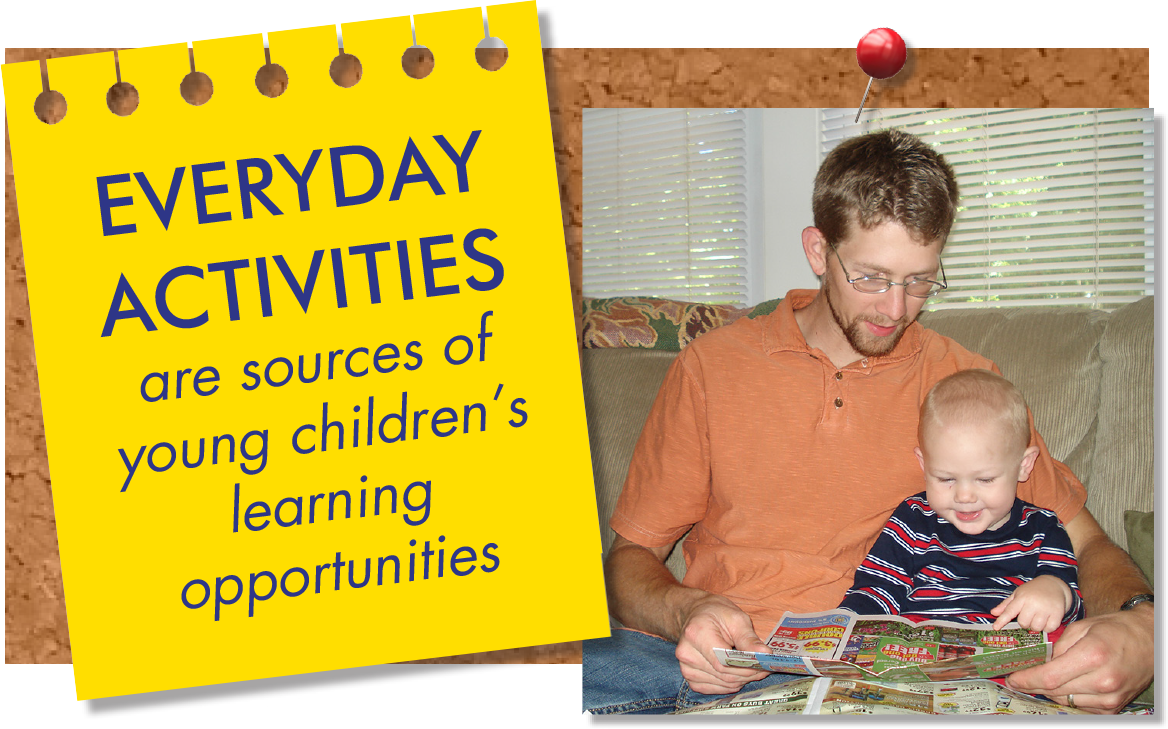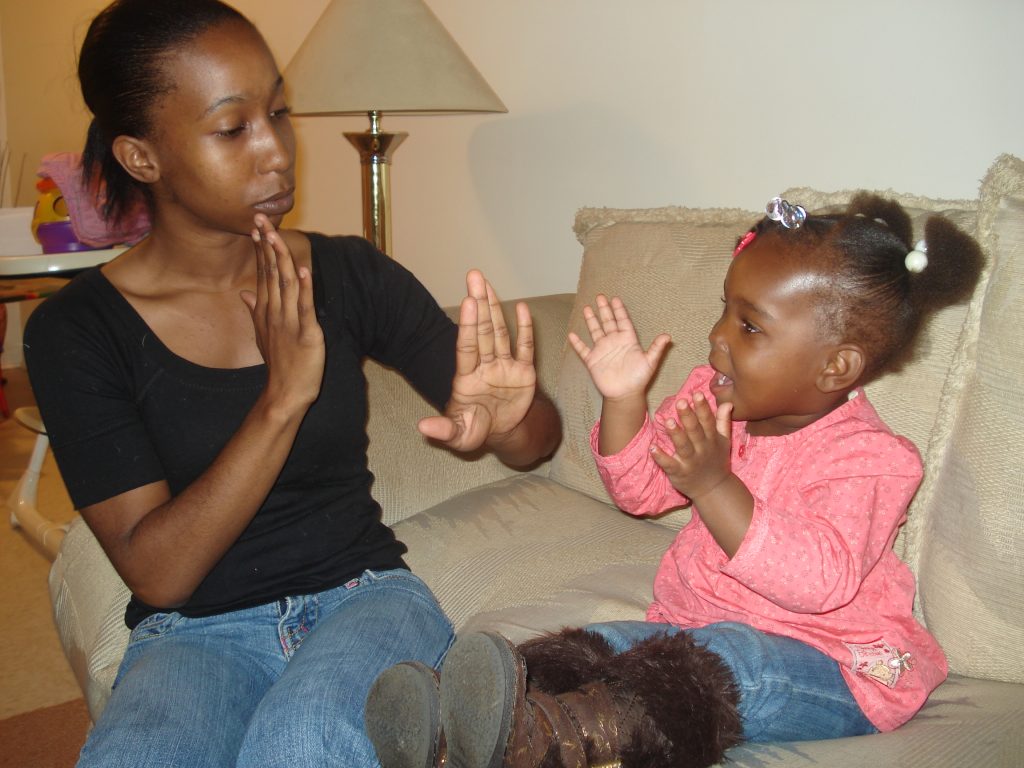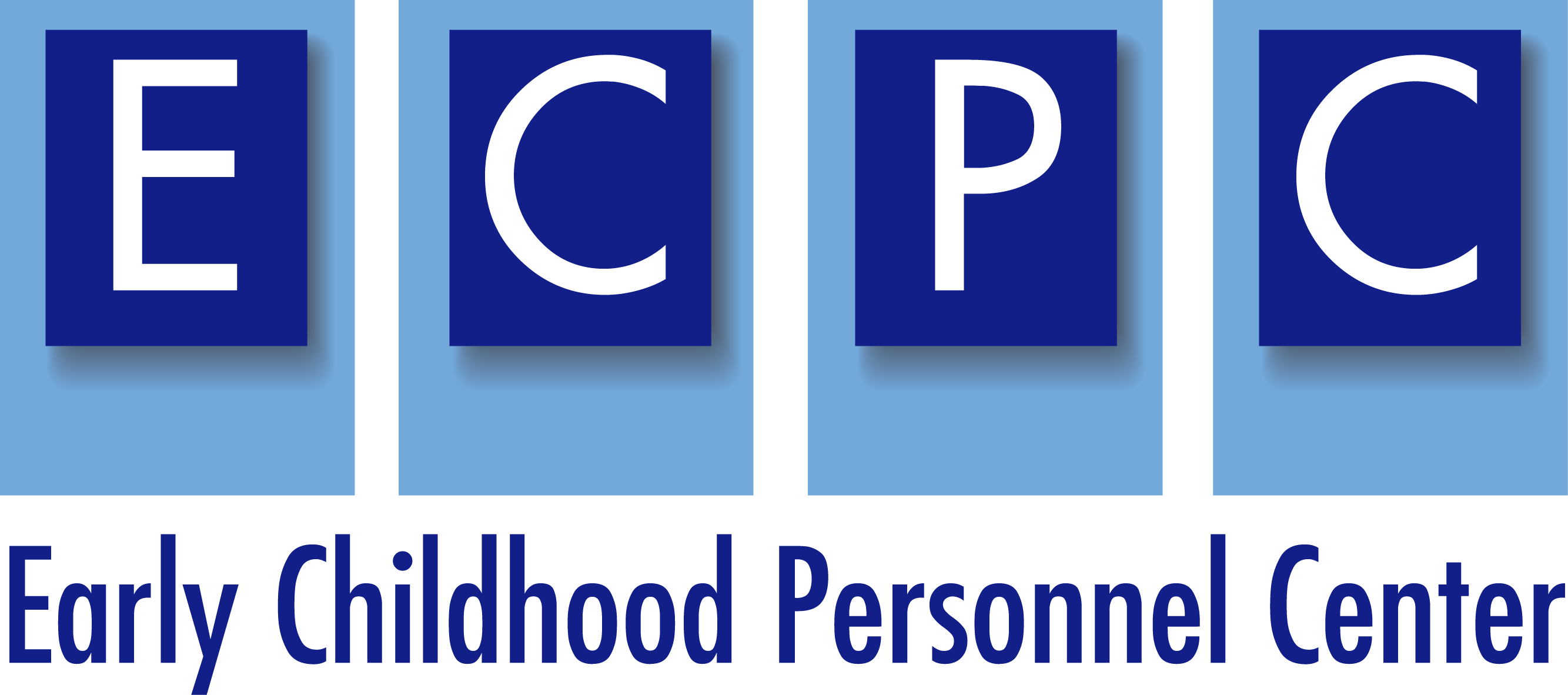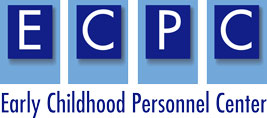
Definition
Everyday child learning opportunities include the many different activities infants, toddlers, and preschoolers experience in home, community, and childcare/preschool settings to:
- Promote child engagement with people and/or materials
- Encourage child acquisition of functional, real-life skills
- Learn about the responsiveness of other people and materials in their lives
Everyday activities are often described as routines, activity settings, activities of daily living, and daily opportunities, among other terms.
Need2Know
Early childhood intervention with a young child with disabilities or delays once a week in isolation includes fewer than 10,000 learning opportunities per year. Young children with disabilities or delays participate in 40 to 50 different activities almost every day. Using everyday home and community activities as sources of child learning opportunities provides more than 250,000 learning opportunities each year.
Child Engagement
- Children participate in and stay engaged in everyday activities for longer periods of time
- Children become more actively engaged in interactions with people and materials
- Children take more responsibility for initiating interactions

Characteristics
The key characteristics of everyday family and community child learning activities are:
- The activities are part of the child’s everyday life experiences such as dressing, feeding, playing, and so forth
- The activities engage the child in interest-based learning opportunities
- The activities provide the child many different kinds of learning opportunities as part of participation in different activities
- The activities happen as many times as possible to encourage practice and mastery
- Each activity provides lots of different child learning opportunities
- The activities are especially likely to help the child practice emerging abilities and develop skills
- The activities allow the child lots of opportunities to try to use his or her abilities in different ways
Child Outcomes
Everyday child learning opportunities are effective for promoting children’s acquisition of:
- Social interaction behavior and skills,
- Communication and language skills,
- Play behavior with people and toys,
- Fine and gross motor abilities, and
- Many other important functional (activity-specific) behavior and skills.
Take a Look
Learning Through Pet-Care Routines
Eighteen-month-old Jenna can’t seem to take her eyes off her family’s new puppy. Dad Hal is charmed by Jenna’s animated facial expressions and babbles of delight whenever their playful pet, Bilbo, scurries into view. Hal begins finding ways to include Jenna in caring for and interacting with the puppy. “Bilbo needs to eat and drink every day, just like we do,” he explains, showing Jenna a plastic cup she can use to scoop just the right amount of kibble to pour into Bilbo’s dish. He helps Jenna climb up on a kitchen chair, turn on the faucet, and fill Bilbo’s water dish. Her efforts become their first-thing-in-the-morning routine. Together they make up games to play with Bilbo. Jenna learns to roll and even toss different-sized balls for the puppy to fetch. On her own she has begun “talking” to and “reading” storybooks to Bilbo.
Lunch 'n' Learn
Mira notices a group of preschoolers clustered around a table in their childcare classroom’s dramatic play center. “What’s up?” she asks, approaching the group of 4-year-olds. “This is my restaurant,” Kenya tells her teacher. “You can have anything you want!” The children’s play gives Mira the idea to incorporate their restaurant theme into the class’s regular lunch time. Soon the children are relishing taking turns in various helper roles for the meal routine, becoming “greeters,” “servers,” and “customers” at what they dub “The Yummy Place.”
They get to create and distribute menus with picture cut-outs and word labels of each day’s fare; decorate and set tables; practice welcoming and seating classmates; describe the day’s “specials”; use a pad and pencil to take pretend orders; handle serving dishes; use “dining-out manners”; exchange play money; and much more. Soon what was once a messy routine has become many children’s favorite part of the day.
Change Up the Learning Fun
Ten-month-old Micah loves diaper-changing time. At regular intervals during the daytime hours she cares for him, his grandmother claps her hands and sings a funny, rhyming song she invented to signal it’s time for a change. Micah imitates her clapping, babbles happily along with her song, and crawls to the changing station Grandma has set up on a sturdy dresser. “Time for a change. What do we need?” Grandma asks as she opens the bottom drawer. Micah reaches in, plucks out a clean diaper, and holds it up toward Grandma. “Thank you, kind sir!” exclaims Grandma, making a deep curtsey and sending the baby into a flurry of giggles. Once he’s settled on the changing surface, Micah gets to pull a wet wipe out of the dispenser, move his arms and legs around in response to Grandma’s silly directions, and hear her chat about everything she’s doing. When he points to the frequently updated gallery of family photos and magazine cutouts Grandma arranges next to the dresser, he gets to hear her tell exciting stories about each one.
You'll want to try this:
You can try some of the following ways to improve your inclusion of everyday learning in your interactions with young children:
- Download the Everyday Child Learning Activity Checklist to monitor any and all opportunities to observe or use this practice.
- With a learning partner (a student or practitioner colleague), arrange to observe several practitioner-child(ren) and parent-child interactions. Note each example of everyday learning opportunities in which they engage, then compare your lists and talk about the kinds of things the children can learn during these activities. Together make a list of potential everyday learning opportunities that were present in the activities and settings but ignored during the observation period.
- Design and create posters for promoting everyday learning opportunities that could be displayed in a neighborhood center, library, or other place families of young children might see it. What illustrations and what clear and succinct messages will attract attention and communicate the concept and the importance of this practice?
- Ask a professor or experienced practitioner to observe you during a period of time spent interacting with a child or children. Ask them to use the Everyday Child Learning Activity Checklist to evaluate and give you feedback about your use of the practice.
Additional Information
To learn more about everyday child learning opportunities, take a look at these online resources:
Child Learning Comes Naturally video from the Puckett Institute
Every Day I Learn Through Play (English) and (Spanish) parent-friendly practice guide booklets from Pennsylvania Promise
Everyday Ways to Support Your Baby’s and Toddler’s Early Learning (English) and (Spanish) one-page parent handouts from Zero to Three
The Power of Using Everyday Routines to Promote Young Children’s Language and Social Skills practice guide for parents from the Hanen Center
Identifying Interest-Based Everyday Activities for Infants, Toddlers, and Preschoolers and Step-by-Step Guide for Providing Young Children Everyday Language Learning Opportunities practice tools from the Center on Everyday Child Language Learning
Parent materials from the Windows of Opportunity early childhood home-visiting curriculum





